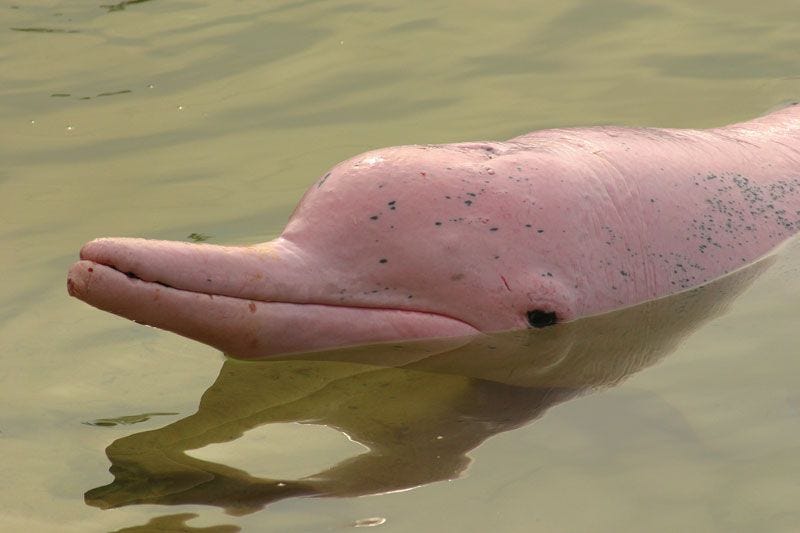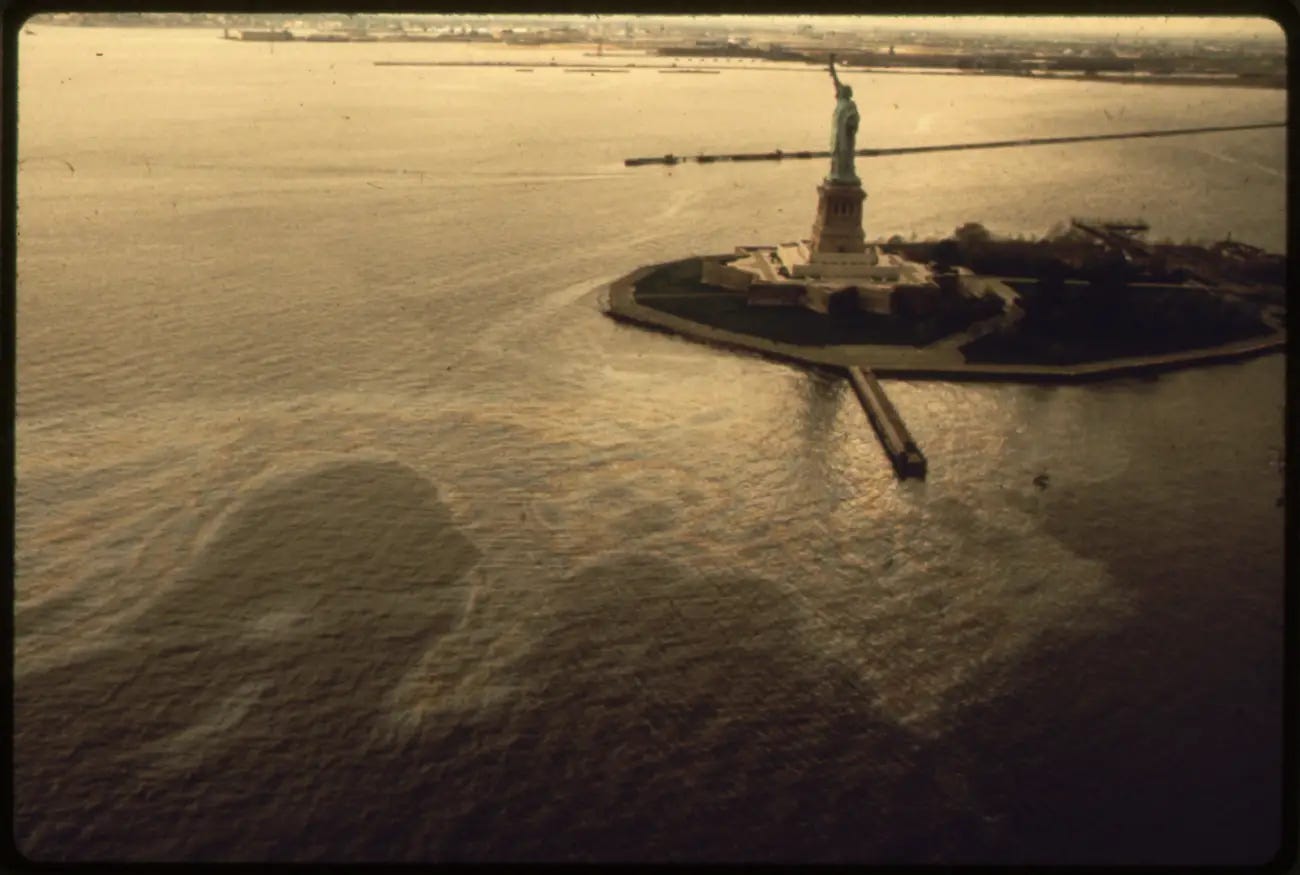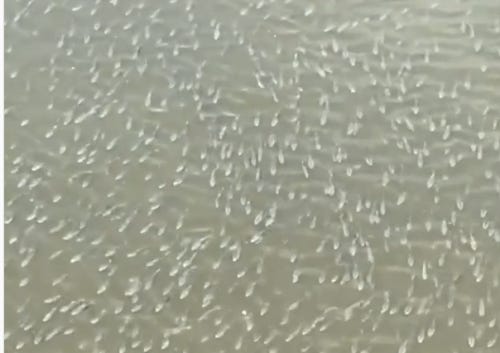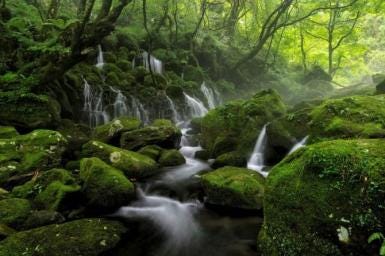Careful readers may recall that about a month ago, I saw a dolphin in the East River! This is a fact that I have also told almost everyone I have spoken to since, whether it is relevant or not (mostly not). Several of you wrote to me expressing concern for the dolphin, worried that something must be terribly wrong, or soon would be. It was, after all, swimming in the East River, neither a clean nor natural place for a dolphin.
In fact, it’s just the opposite! I thought it might be an interesting case study for arguments I often try to make here, which is that regulations matter, even if we can’t see the direct effects every day, and that the important work of environmental restoration, protection, and conservation might take a long time, but it is worth it.
But let’s begin at the beginning: the East River is not a river at all (though there are six species of dolphins that live in freshwater rivers (although the Yangtze River dolphin may be extinct), in China, South Asia and South America). It is a saltwater tidal estuary that connects the Long Island Sound at its north end to Upper New York Bay (The Atlantic Ocean) to the south. The part of the “river” where I saw the dolphin is called Hell Gate, a swirling eddy of currents and tides that whips the shores of Queens, Manhattan, Ward’s Island, and Blackwell Island. This is a good spot for dolphins to catch fish during running tides, which is likely what was going on when I spotted the dolphin from across the FDR Access Road.
Now that we know where we are — the narrow tidal strait of a saltwater estuary — we can begin to talk about the dolphin. Dolphins are native to all parts of the Atlantic Ocean, and have lived here for a very long time. It only seems like they shouldn’t because of what people have done to their home over the last few hundred.
When European colonists arrived, they began dumping their dead animals, garbage, and raw sewage into the water around the city, and let runoff from polluting industries like leather tanning run free down the streets. As the field of public health and understanding of germ theory evolved, sewers were buried and cleaner drinking water was brought in from upstate New York, via the Croton Aqueduct, a miracle of engineering. (Here is a very interesting history of the New York water system.)

But up until the creation of the EPA in 1970, and the passage of the Clean Water Act in 1972, New York’s waters were also its municipal waste dump. Factories were allowed to dump their toxic waste into the sewer system: PCBs, radioactive chemicals, heavy metals. The Gowanus Canal, which empties into the East River, was designated as a Superfund site in 2014. The EPA has said it is one of the most heavily polluted bodies of water in the country. A dolphin died after swimming into the canal in 2013.

Treated sewage and straight-up garbage was hauled 12 miles offshore on barges, and dumped right into the harbor, from 1924 until 1984, when the EPA said the water quality was so bad that the garbage had to be taken farther away — 100 miles offshore, a practice which continued until 1992. There were 300 oil spills in New York Harbor in 1973 alone. Still today, the city relies on a sewer system that is about 150 years old, so 60 percent of the city’s wastewater runs through combined sewer outflows (CSOs), where rainwater and sewage run together through pipes to a wastewater treatment plant. Normally, that works okay, but if it’s raining at a rate of more than 1/10 of an inch per hour that mix of raw sewage and rainwater runoff (which sweeps in most of the debris from the streets) flows straight into the rivers, at as many as 460 different locations around the city. This Twitter account, “combinedsewer”, posts a notice every time CSOs are overflowing, and where.
But over the last 50 years, things have really changed — as you can see in this report from the state. By several parameters — the amount of dissolved oxygen, bacteria (fecal coliform and enterococcus), chlorophyll-a, and nitrogen — water quality in New York City is better than at any time in the last 113 years. Why? Because of the creation of the EPA in 1970, the passage of the Clean Water Act in 1972, and the efforts of activists, lawyers, and voters who have pushed the city, state, and federal governments to clean up the existing mess, and stop more mess from being made.
And they have done it, in places like Newtown Creek, another Superfund site, heavily polluted by the presence of refineries (more than 50 oil and petrochemical refineries), factories, sewage, etc. Now, bunker (or menhaden), bluefish, blue crabs, eels and shorebirds can be found there. Marathon swims happen around the island of Manhattan. Whales are spotted off the Rockaways, although there are still plenty of hazards here for them. Below is a visualization of ship traffic in New York Harbor, and whales from a paper published in 2019. The blue isn’t water — it’s boats. The circles are humpback whale sightings.

And now, dolphins are back in the East River. None of this happens by accident — it happens because people with a vision of what the environment should look like and what citizens deserve — clean air, clean water, a habitable planet, at the bare minimum — do the work, all the time.
So when I saw the dolphin in the East River, it was sublime. It should be commonplace, but it isn’t yet. Maybe someday. It made me so grateful to live in a time when it’s possible to take the achievements of the EPA and environmental laws and regulations for granted, but reminded me just what’s at stake if we do.

Earlier this month, House Republicans passed a bill, the “Limit, Save, Grow Act of 2023,” which included a provision that would require all regulations to go before Congress for a vote. (This is an excellent article from the New York Times by Margot Sanger-Katz about this provision and why it matters.) It also repeals or alters nearly all of the tax credits for the clean energy transition.
The federal government creates regulations all the time, for everything from proposing new species to add to the Endangered Species List to amending the test procedures for packaged terminal air conditioners and heat pumps, to name two. Under this provision, any such rule would need to get a full vote of Congress.
While people can have good faith arguments about the appropriateness of certain regulations or their stringency, thee idea that Congress would have to vote on every regulation before it went into effect would basically halt the ability of federal agencies to regulate… anything, given that regulations, as we know, are political, and serve various ideologies and agendas.
If you need any further proof of why regulations matter, and why it’s important for the government be able to regulate certain things, using the knowledge and counsel of actual experts, just ask my friend, the dolphin.
Thanks for reading.
Tatiana










Share this post